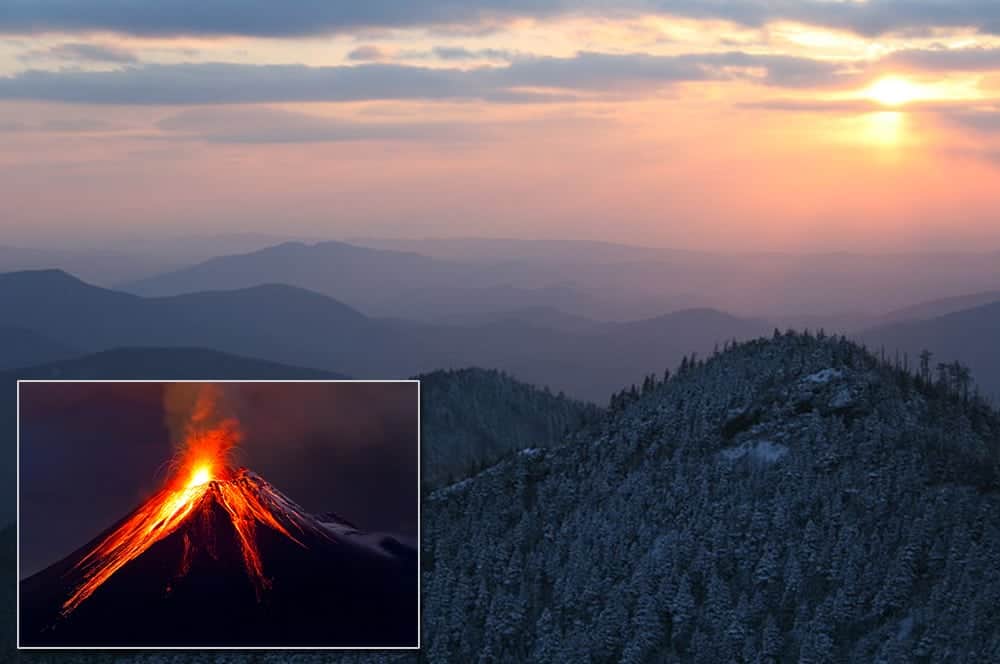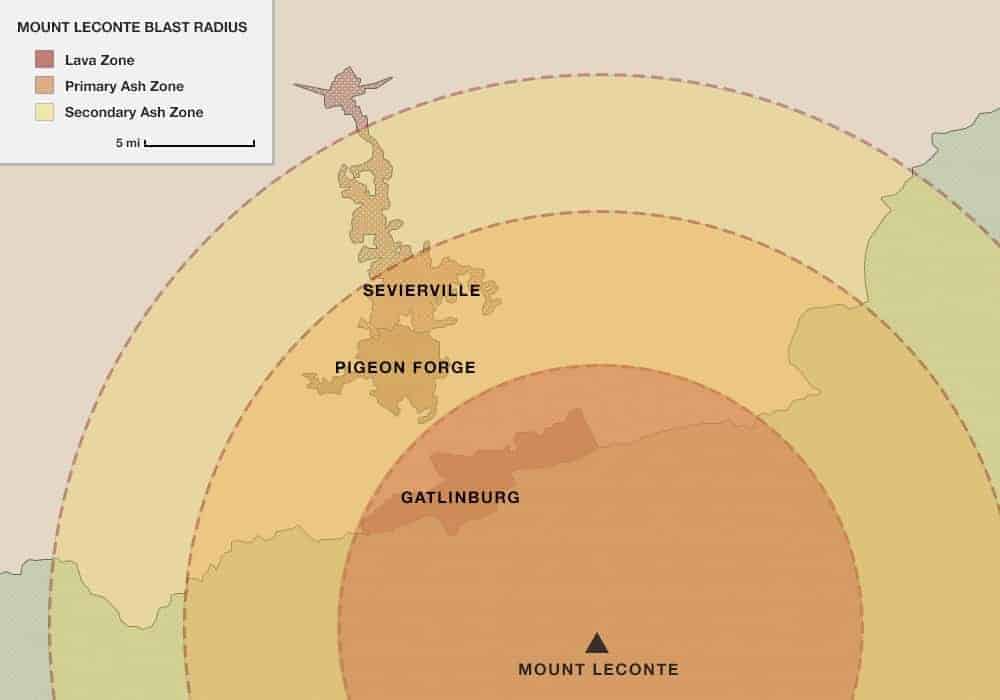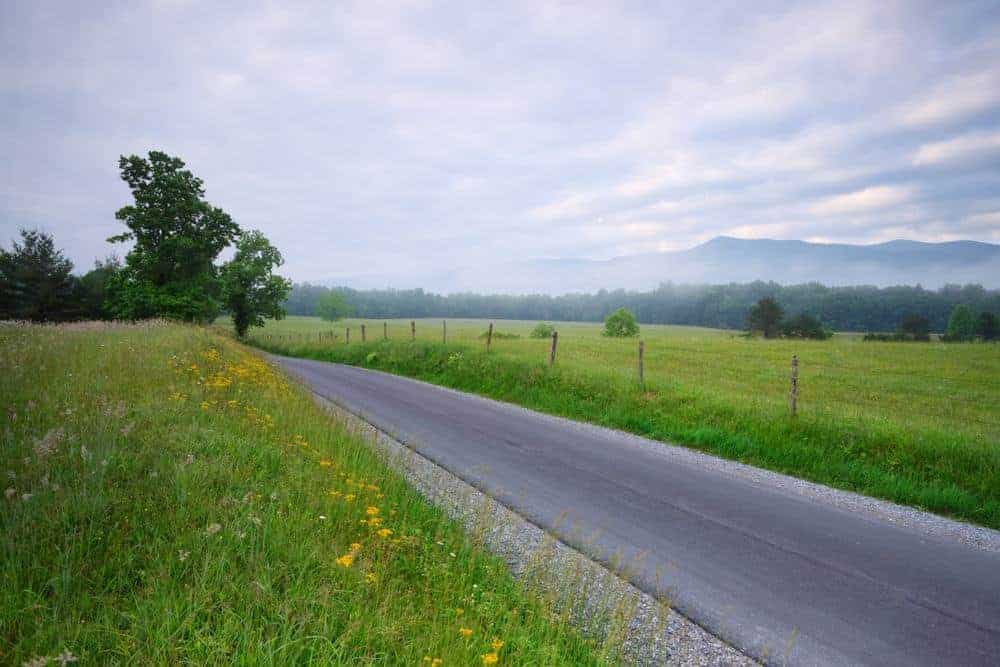
Active Volcano Discovered Under the Great Smoky Mountains
A year-long geologic study conducted by the National Park Service has determined that there is an active volcano in the Great Smoky Mountains National Park. The NPS shared its findings in a press release this morning. We have summarized the report below.

How the Volcano was Discovered
Scientists from the National Park Service began considering the possibility that a volcano could exist in the region after an earthquake hit the Smoky Mountains in February 2015. Although the 2.1 magnitude earthquake was a minor tremor, it raised red flags among geologists. Earthquakes in the Smoky Mountains are exceedingly rare, with only three quakes on record within the national park boundaries.
While the first earthquake occurred in 1979, the earthquakes in 2011 and 2015 were only a few years apart. Unusual earthquake patterns can indicate the presence of volcanic activity, so the National Park Service assembled a team of researchers to investigate.
To search for a possible volcano, scientists installed a number of seismometer stations around the park and used planes with airborne radar to scan the mountains. After a year of gathering data, the geologists uncovered a vast magma chamber beneath Mount LeConte. In the National Park Service press release, lead researcher Dr. Andrew Johnson admits that the discovery was truly shocking:
“I was dumbfounded. Of course, we knew this was a possibility; that’s why we were doing all of this research in the first place. But to find a massive reservoir full of magma right under our noses…It just boggles the mind.”
At 6,593 ft tall, Mount LeConte is the highest peak in the state of Tennessee, but it is relatively short by volcano standards. However, there are a number of volcanoes of comparable size, including Mount Fentale in Ethiopia, Bardarbunga in Iceland, and Khangar in Russia.
Threat Level
As mentioned above, Mount LeConte is an active volcano. Since its discovery is so recent, scientists are still working to determine what risk the volcano poses to the area. The United States Geological Survey uses a color coded volcano alert-level system to characterize the likelihood of eruptive activity:
Although there is not complete consensus, most geological experts who have been consulted believe that Mount LeConte is best classified as Green. Nevertheless, the volcano is being closely monitored for any change in activity. When asked about the chances of an eruption, Dr. Johnson had this to say:
“To be frank, Mount LeConte is a ticking time bomb. The volcano is going to erupt eventually; it’s just a matter of when. It could go off next week, five years from now, or even 300 years from now. The only thing we can do is remain vigilant and take the necessary precautions.”
Impact of a Potential Eruption
Just as the timeframe for Mount LeConte’s eruption remains unknown, the severity of a potential eruption is also contested. There is a good chance that an eruption from Mount LeConte would be relatively minor. The similarly sized volcano Bardarbunga in Iceland erupted from August 2014 – February 2015, which resulted in some air pollution but little lasting damage.
However, the size of a volcano is not always a reliable indicator of its eruptive impact. For instance, Mount Vesuvius was only 4,203 ft tall. Despite being nearly 2,400 feet shorter than Mount LeConte, this famous volcano unleashed a torrent of molten rock, fumes, and ash that released more thermal energy than a nuclear bomb and completely decimated Pompeii in 79 AD.
If Mount LeConte were to erupt, its blast radius would encompass Gatlinburg, Pigeon Forge, and much of Sevierville. There is growing scientific evidence that LeConte had its most recent burst of activity 12,000 years ago. In light of the recent findings, a legend referring to a “Great Fire Mountain” that exists in the Cherokee oral tradition is being given renewed attention.
New Safety Precautions
The Great Smoky Mountains are one of the country’s major tourist destinations, so it is vital for the local economy that the newly discovered volcano does not disrupt everyday life. In order to ensure the safety of vacationers and locals alike, the National Park Service has suggested the implementation of the following procedures in the cities surrounding Mount LeConte:
- All National Park Visitor Centers will give out free masks for travelers to keep in their cars in case the air quality is diminished by high quantities of ash.
- Before every dinner show or any other type of performance in the area, there will be 20 minutes of standardized volcano safety instruction. Topics covered will include how to identify the smell of sulfur, what to do if you see lava, and the best places to hide in case of an eruption.
- The Gatlinburg Space Needle will be outfitted with a series of megaphones that will announce the color coded volcano alert-level each morning. In the event of a Code Red, the entire tower will light up with red LED lights and emergency flares will shoot from the tower.
- Clothing stores and sports outfitters will be encouraged to stock a complete selection of heavy coats, hats, and gloves throughout the year in case an eruption from Mount LeConte blocks out the sun, causing volcanic winter.
For more information about the volcano, don’t check back here. This entire story has been an April Fools’ Day joke! There aren’t any volcanoes in the Great Smoky Mountains (that we know of), so you can breathe easy if you love to vacation in the area. To learn real facts about the Smokies, check out our Great Smoky Mountains National Park page.








Comments are closed.